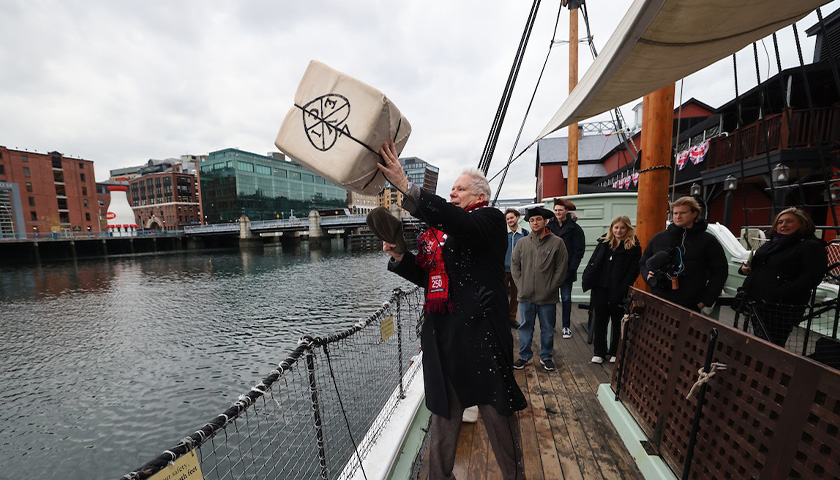On the Tea Party Trail

There may be no better tour guide to Boston’s Revolutionary history than Suffolk History Professor Robert Allison, author of numerous books on the era and chair of Revolution 250, a consortium of organizations planning commemorations of the American Revolution’s semiquincentennial in 2026.
But before there could be an American Revolution, there was a rebellious group of Bostonians whose waterfront antics and destruction of British tea late on the evening of December 16, 1773 became legend and “after which the American Revolution became inevitable,” Allison says.
Ahead of this month’s commemoration of the Boston Tea Party—expected to attract tens of thousands of tourists and history buffs to Boston Harbor—Allison brought the scene vividly to life for his history students with a guided tour through Suffolk’s campus along the Freedom Trail, highlighting key Boston Tea Party hotspots.
'It Wasn’t About the Tea'
Why has the Tea Party become such a meaningful and enduring symbol of rebellion around the world? “It wasn’t about the tea,” Allison declares. “It was about power and who would wield it.”
The saltwater tea dump actually followed a period of relative calm citywide in the wake of the Boston Massacre, the 1770 skirmish with British redcoats that killed five colonists. Tensions among colonists over “taxation without representation” reached a fever pitch after a series of meetings that culminated on December 16, 1773, when more than 5,000 colonists jammed into and around the Old South Meeting House to hotly debate a controversial tea tax.
When the final attempt at compromise failed, Sons of Liberty leader Samuel Adams gave a signal from the podium to a ragtag group of men who led the way to Griffin’s Wharf. There they dumped an estimated 92,000 pounds of tea in 342 chests—worth millions of British pounds—into the harbor.
Starting at the Granary Burying Ground—steps from the final resting spots of Paul Revere, Samuel Adams, John Hancock, and victims of the Boston Massacre—Allison reminds us that the friendly face on that ubiquitous beer bottle bears no resemblance to the real Samuel Adams. He was actually a dour, humorless Puritan who didn’t go by casual nicknames, and most certainly did not brew ale.
Download a Video Transcript [PDF]
A few hundred yards away at the Old South Meeting House, Allison paints a vivid portrait of a fed-up, angry mob rallied to march down to the waterfront by a set of plotting politicians who were cagey enough to stay behind to deliver more speeches so they could prove “plausible deniability,” says Allison.
Download a Video Transcript [PDF]
For the big re-enactment this month, tea from over the world has been sent to Boston to be ceremonially “dumped” into the harbor—including 250 pounds from the British East India Company, the purveyors of the original crates.
Down at Griffin’s Wharf, site of the Boston Tea Party Ships and Museum, Allison boards a recreation of The Eleanor, the ship that saw its cargo dumped overboard. The destruction of the tea drew British wrath, further inflaming the power struggle with the colonies.
Download a Video Transcript [PDF]
“This is why John Adams said the Revolution was accomplished before a drop of blood was spilled at Lexington Green,” Allison says. “Without this event you don’t have independence…he knew it would be remembered.”
Download a Video Transcript [PDF]
Download a Video Transcript [PDF]



